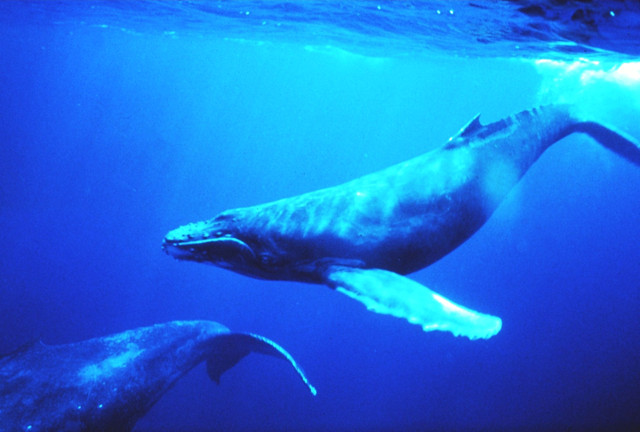
by Kate S. Zalzal Tuesday, December 27, 2016

Humpback whales in singing position. Credit: NOAA.
In today’s ocean, larger-bodied animals are more likely to become extinct than smaller creatures, according to a new study in Science. This is contrary to extinction patterns seen during other mass extinction events in Earth’s history, during which smaller species were hit the hardest.
“This is most likely due to people targeting larger species for consumption first,” said Jonathan Payne, paleobiologist at Stanford University and lead author of the study, in a statement. Payne and his colleagues used the mollusk and vertebrate fossil record from mass extinction events over the past 445 million years to examine associations between extinctions and ecological traits. They then compared their findings with current trends in the modern ocean.
In addition to body size, they found habitat location to be a factor in determining extinction threat: In the past, creatures living at the surface were more likely to go extinct than creatures living at depth, but today, the extinction threat is similar between the habitation zones. Although fishing has a greater impact on surface-dwelling species, Payne said nutrient pollution and oxygen deprivation in bottom waters are factors that likely contribute to bottom-dwelling species losses as well.
Threats to large-bodied marine animals at the tops of food chains could portend significant and long-term ecological disruptions, the researchers said.
© 2008-2021. All rights reserved. Any copying, redistribution or retransmission of any of the contents of this service without the expressed written permission of the American Geosciences Institute is expressly prohibited. Click here for all copyright requests.